
Rootconf is the largest DevOps, and Cloud
infrastructure related conference in India. This year's event happened on
14-15th April in the MLR convention center, Bangalore. I traveled on the day
one of the event from Pune. Woke up by 3AM in the morning, and then took the
first flight to Bangalore. Picked up Ramky on my way to the venue. Managed to
skip most of the (in)famous Bangalore traffic thanks to a govt holiday.
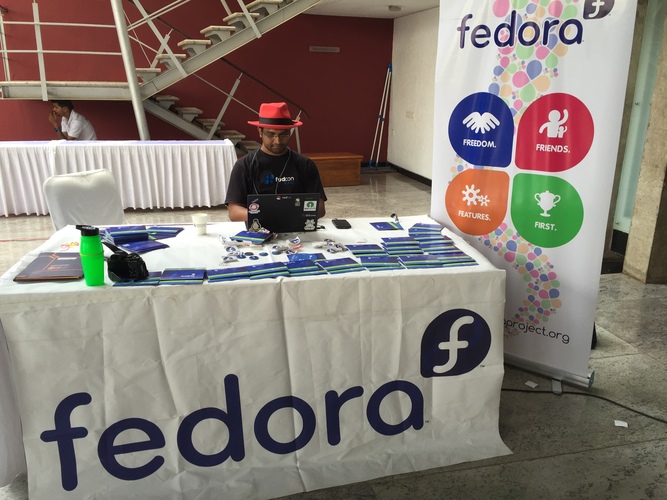
I carried the Fedora standee, and the table cloth from Pune, we set up the
Fedora table in the conference. Meanwhile the place was getting full with
attendees. We found so many ex-foss.in friends. Premshree, Pankaj, Raj,
Vasundhar and many others I met after years. There were 300+ attendees in the
event.
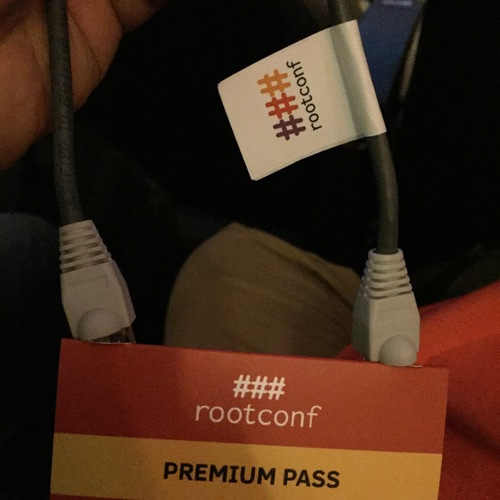
I should also mention about the Cat5 cable lanyard.
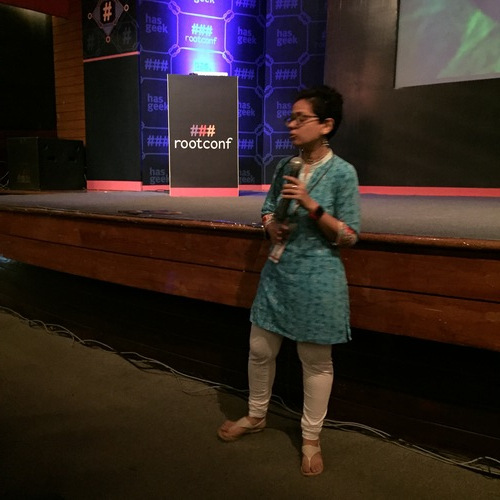
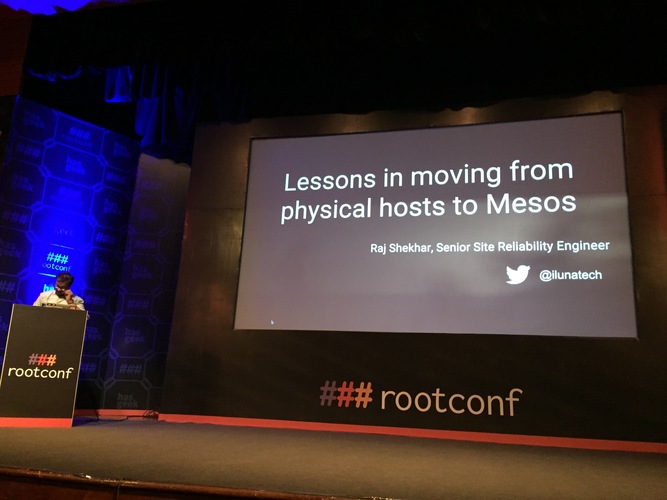
The day started with Zainab welcoming
everyone is super fast manner :) The first talk of the day was " Happiness
through Crash-Only software" by Antoine
Grondin. The whole idea that failure is
part of life, and we will make our software even more complex by trying to
avoid is something we all should keep in mind. He gave some ideas about how
Digital Ocean works in the back. Instead of a normal start/end he explained
how having recovering from failed state as start, and considering that the
process will fail at the end can help. Seeing hand drawn slides was another
exciting thing for me, I was doing that quite a lot in my previous talks.
The next talk was from Raj Shekhar, who gave an
overview of Mesos. Even in the limited time, his talk was a very right fit
while still describing the use case. This was the first time I listened to a
talk about Mesos, and it was a very good one.
After this during tea break we moved out the booth/table. We had Ramky,
Lalatendu, Aditya, /me, and rtnpro in the table talking to the attendees. The
Fedora DVD(s), and badges went out like hot cakes :) Through out two days we had
many questions related to Project Atomic, the
great looking stickers actually helped to get more attention. In between, I
went through the details of my talk to Raj, he provided some valuable input.
Food is always great in hasgeek events, but having so
many food startups from Bangalore in one place seriously added new flavor to
the conference. hasgeek is not only growing itself, but making sure that they
have a great community all across the conference, from talks to food,
everything.
Rest of the day 1 we spent talking to people in, and around booth area. hasgeek
gets some great recording done of their talks, so we can view them in
future :) In the evening we had the dinner at the venue, once again too tasty
food :) I went to rtnpro's house by 10pm as I still wanted to work on my slides.
Day 2
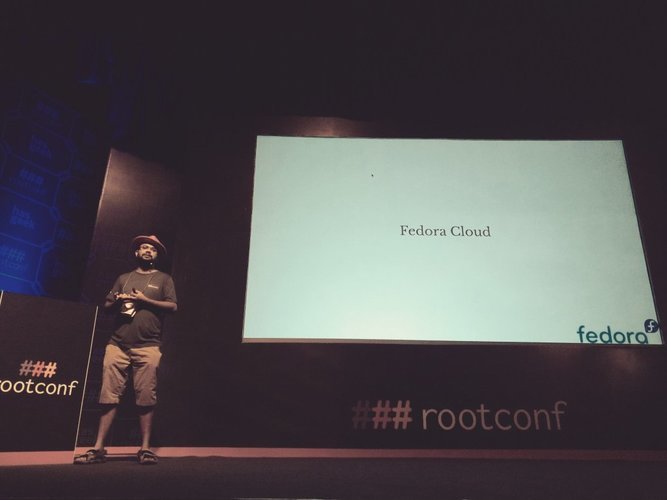 (Photo by Lalatendu)
(Photo by Lalatendu)
Woke up by 6:30AM, and went through my slides once again. The title of my talk
was "Failure at Cloud and rescued by Python". The agenda of the talk was to
encourage DevOps/Sys-admins to write Python scripts than shell scripts. It was
the first talk of the day. I hope it went well, the slides are available
here. As I mentioned
Ansible in my talk, we had many Ansible questions
asked in the Fedora booth.
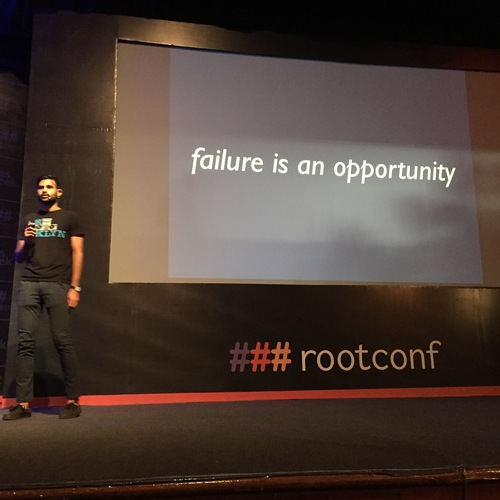
Next was Premshree, who talked about "Continuous
deployment at Scale" with the detailed example of how they handle things at
Etsy. Glad to see that they use a IRC bot to do the
deployment :)
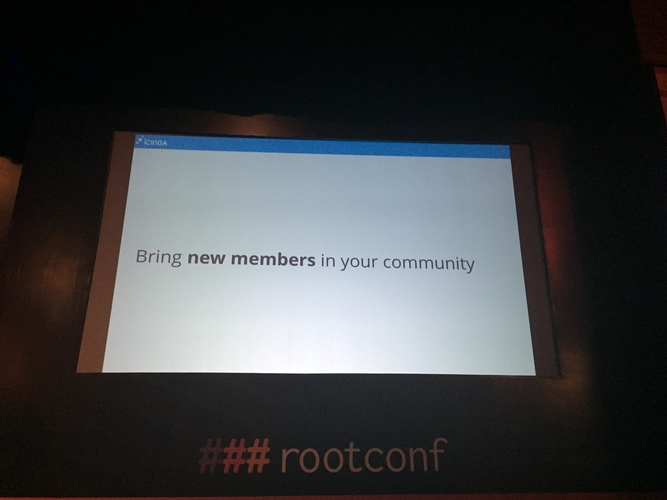
After lunch I attended "Working in and with Open Source Communities" from
Bernd Erk. This talk was full with tips about
communities, how to treat everyone as member. One major point was about a
community leader who should become the balance between the people who talk the
most, and the silent ones of the community. He also emphasized about getting
new members in the community as "Because you will die someday" :)
Rest of the day we again spent in and around of the Fedora booth. Met Tarun
Dua after a long time. I came back in a late night
flight to Pune. I will post the links to the talk videos when I get it.


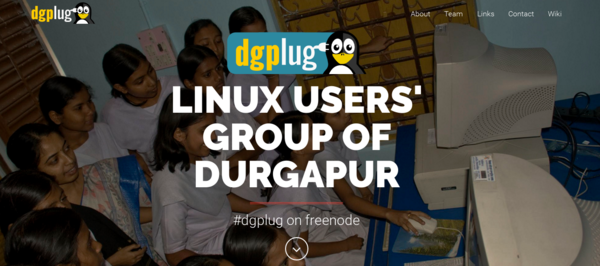





 (Photo by Lalatendu)
(Photo by Lalatendu)


